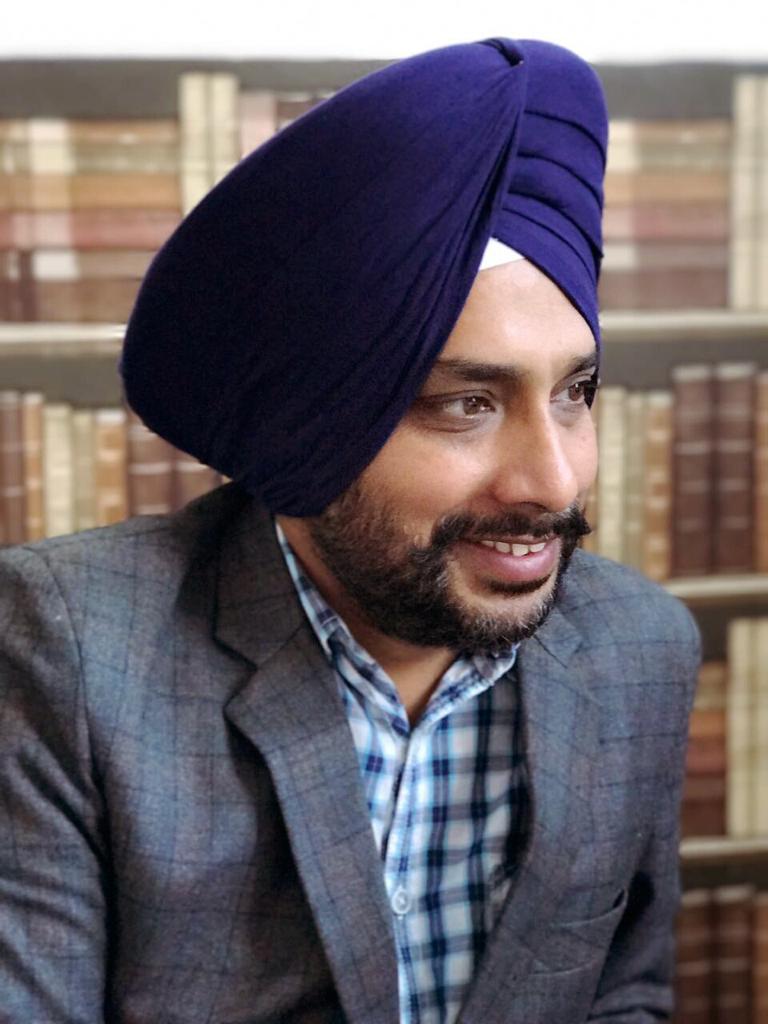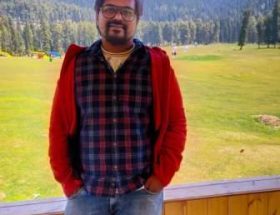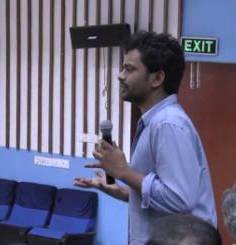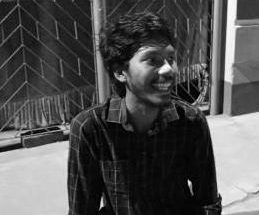Dr Jas Simran Singh Kehal
 ”So distribution should undo excess, and each man have enough”, King Lear Act IV, Scene I, Shakespeare. If we translate the original text in accordance with the scene, it means “The spoiled man who has everything, who can’t see the misery around him because he doesn’t feel it himself, should be made to feel agony so he can learn to share his wealth. That way wealth would be redistributed until everyone has enough to survive”. This unfair distribution of wealth has spiked globally since the days of Shakespeare.
”So distribution should undo excess, and each man have enough”, King Lear Act IV, Scene I, Shakespeare. If we translate the original text in accordance with the scene, it means “The spoiled man who has everything, who can’t see the misery around him because he doesn’t feel it himself, should be made to feel agony so he can learn to share his wealth. That way wealth would be redistributed until everyone has enough to survive”. This unfair distribution of wealth has spiked globally since the days of Shakespeare.
As per the latest Credit Suisse World Global Wealth Report:-
*Nearly 1% of world’s adults are millionaires who collectively own 44% of global wealth.
*The richest 10% own 82% of the global wealth.
*World’s 2,153 billionaires have more wealth than the 4.6 billion people who make up 60 % of the planet’s population.
*One million new millionaires were added last year (2018-19) globally.
*The number of such billionaires has doubled in the last decade.
India’s economic march is also from British era to the current one of billionaires. India’s richest 1% of population holds 42.5% of national wealth. This is more than four times capital held by bottom 70% of country’s population. If we take into account richest 10% of Indian population. 74.3% of national wealth falls into their kitty. With the richer getting richer at a fast pace, India’s wealth pyramid is amongst the most unequal countries of the world. Credit Suisse World Global Wealth Report 2019 predicts a 56% rise in the number of billionaires in India during next five years.
 The above statistics reveal the price poor pay to fill the pockets of the rich. “Poverty is the deprivation of opportunity” as said by Nobel laureate Amartya Sen. About 65% of India’s school students go to government schools. While convent schools are conducting online classes to keep the privileged updated with curriculum during the current times of corona lockdown, government school students have been dually devoid of academics and mid-day meals. This is definite deprivation of equal opportunity. Hiking of fees and lowering of stipends in central universities is a well-orchestrated plan to block this opportunity. When a student graduates with a debt conferred on him by our education system, he is devoid of free thinking thus losing the opportunity to set him free from the class barrier. A penurious pupil thus produces an impoverished scholar.
The above statistics reveal the price poor pay to fill the pockets of the rich. “Poverty is the deprivation of opportunity” as said by Nobel laureate Amartya Sen. About 65% of India’s school students go to government schools. While convent schools are conducting online classes to keep the privileged updated with curriculum during the current times of corona lockdown, government school students have been dually devoid of academics and mid-day meals. This is definite deprivation of equal opportunity. Hiking of fees and lowering of stipends in central universities is a well-orchestrated plan to block this opportunity. When a student graduates with a debt conferred on him by our education system, he is devoid of free thinking thus losing the opportunity to set him free from the class barrier. A penurious pupil thus produces an impoverished scholar.
Corona pandemic has created a medical emergency situation which is bound to create an employment crisis. The effect of unemployment is going to be more in India as about 90% of its population is working in the informal sector are at the risk of falling deeper into poverty. The International labour organisation (ILO) in its latest report has predicted that this pandemic is expected to put 400 million blue collar workers in India on the verge of destitution. With healthcare expenditure of about 1% of its GDP and living in a country which spends five times more on defence than health, the mazdoor class is going to be a sitting duck in this catastrophe.
Ironically, for total population of 1.4bn a meagre ₹1.70 lakh crore package was announced recently to fight corona pandemic as against a required estimate of ₹10 lakh crore. On the other hand, a CNN-News18 RTI revealed that ₹1.76 lakh crore corporate loans of 416 defaulters each owing 100 crore or more were waived off post-demonetization with an average amount of ₹424 crore per borrower. As rightly said by OXFAM India head, our broken economies are lining pockets of billionaires and big businesses at the expense of ordinary citizens. The costs and risks of capitalism are socialized to the extent possible, while profits are being privatized.
Out of the choice from economics of liberalisation or politics of empowerment, successive regimes went for the latter. While caste is an enclosed system, class is relatively open which can be transgressed by various means. People are free to gain a different level of education and employment than their parents with personal achievement playing a role. Privatisation of educational institutions right from primary school to university levels and open sale of degrees including that of physicians smacks of state policy to impede this shift from lower to middle and middle to upper class. The retreat of public sector adds to this impediment.
A study covering more than one lakh people over a period of two years titled “ Wealth ownership and inequality in India: A socio-religious analysis” revealed that out of the country’s total assets, the highest 41% was owned by Hindu high castes whereas the lowest was among ST’s and SC’s, each owing 3.7% and 7.6% respectively. It endorsed the blueprint that the powers that be were working to intertwine caste and class. That the lower castes remain the lower class and vice versa as has been for generations and centuries with the gap between them widening to an irretrievable point.
The plutocracy has brought us to a position where architect of our constitution dreaded. In his speech on nation’s first republic day, Dr B. R. Ambedkar had foreseen political democracy with one man one vote but was wary of social and economic inequality and had predicted that failure to readjust wealth in India would put our ‘democracy in peril’. He had warned to remove this contradiction and establish one man one value at the earliest possible and else those who suffer from inequality will blow up the structure of democracy. Enough guidelines to bridge this socioeconomic gap were enshrined in our constitution, Article 38, 39, 41, 45 and 46 in particular, but successive regimes willingly ignored them to serve a selected few.
We need to ask the moral questions: Do I have a right to be rich? And do I have a right to be content living in a world with so much poverty and inequality? This is an honest query put by Amartya Sen. According to a rough estimate, wealth of 63 Indian billionaires was more than country’s 2018-19 budget of ₹24,42,200 crore. Definitely there is under taxing of the wealthy worldwide. According to OXFAM report, if the world’s richest 1% paid just 0.5% extra tax on their wealth for a decade, it would equal investment needed to create 117 million jobs. Studies have concluded that although greed is a universal human emotion, it may have the strongest pull over those of who already have the most resources. The way corporates are shutting shops, delaying/deducting wages and hoarding wealth & resources during COVID-19 financial disaster apprise us of the economic injustice being delivered to the working class.
One of the two objectives of framing our constitution was to attain economic democracy for which every government should have strived. The only way out of this monstrous economic inequality for the government is to debillionarize the country, do a caste and class census to document the disparity, temper wind to the shorn lamb and follow the constitution in letter as well as spirit. As for the proletariat who have committed a crime against themselves by losing ambition to capture government and sacrificed their all to the so-called nationalism, they should acquaint themselves with Rousseau’s Social Contract, Marx’s Communist Manifesto, Pope Leo XIII Encyclical on the conditions of labour and John Stuart Mill on liberty as suggested by Dr Ambedkar way back in 1943 instead of taking delight reading and watching mythological stories of ancient kings and queens.
By deviating from the concept of socialist and democratic economy which is clearly enshrined in its preamble and with failure to draw salutary lessons from the constitution for 70 years, India is bound to pay a surcharge to a 2019 virus.
“As I would not be a slave, so I would not be a master.
This expresses my idea of democracy”– Abraham Lincoln
~~~
Dr Jas Simran Singh Kehal, MS (ORTHO), is an Orthopaedic Surgeon. He also has a Masters degree in Journalism and Mass Communication from Punjabi University, Patiala. He can be contacted at Kehal Trauma Centre, Nangal Dam, Punjab.










